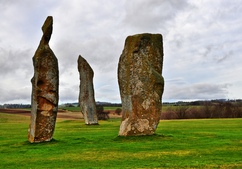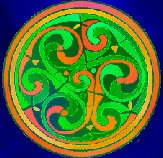


SCOTTISH ANDREW - COLOURIST

Andrew Hennessey © 2017.
Scottish Andrew Arts. | Email

Scottish Colourist and Modernist

The art of Scottish Colourist and Modernist Andrew Hennessey is inspired by early years in environmental science and an empathy with the changing history of the land. He currently resides in the ‘Kingdom of Fife’ in Scotland and his works are influenced by the electric interplay of colours in nature and by the asymmetric forms of natural chaos in the seas and skies around the mountains and coastal scenery of his native Scotland.
His portfolio contains Luminous Scottish landscapes in their colourful glory, Digital Art based on the tidal surges of the ocean on the beaches and a new twist on tartan design for the 21st Century. These he calls ‘Lightscapes’.
His modernist revision of tartan is called ‘Startan’.
Startan is made from the combination of the colour proportions (Setts) of a traditional tartan within limitlessly interacting geometric shapes.
The overall Startan itself becomes a combination of radiating and overlapping design objects, and their outreaching coloured bands.
Startan design progresses tartan beyond the boxes of its traditional grid-iron appearance.
The word ‘Startan’ is an acronym – a combination of star or stellate and tartan.
Startan was invented on the 10th of October, 2007AD by Andrew
Hennessey of Outshore Multimedia, Edinburgh and builds on the tradition in Scottish Arts for the use of bold colour and design.
From around the start of the 20th Century, movements incorporating strong colours and geometric designs included the Celtic revival paintings of Dundee artist John Duncan 1945 and Phoebe Anna Traquair 1912 [derived from the Book of Kells] and also the interior designs and art of Charles Rennie Mackintosh, 1928.
MacIntosh was a modernist. The main concept of the Modernist movement was to develop innovative ideas and new technology: design concerned with the present and the future, rather than with history and tradition. There were also the works of the Scottish Colourists that comprised part of this Scottish romance with colour at the start of the 20th Century.
The Scottish Colourists were four Scottish painters who in the period c.1900-14 who combined their training in France and the work of French Impressionists and Fauvists, such as Monet, Matisse and Cezanne, and applied it to the painting traditions of Scotland, creating a distinctive Scottish idiom.
They were strongly influenced by the rich colours and bold handling of recent French painting, notably Fauvism. Their work was not very highly regarded when it was first exhibited in the 1920s and 1930s, but in the late 20th Century it came to have a formative influence on contemporary Scottish art.
The Scottish Colourists leading figure was John Duncan Fergusson, who visited Paris regularly from the 1890s on and then lived there from 1907 until 1914. Other Scottish Colourists were Francis Cadell, Samuel Peploe and Leslie Hunter.
In that cultural setting therefore, there are historic precedents for the use of bold colour and design in innovative and modern ways in Scotland. Stella Tartan or Startan continues in that tradition.
As does the digital artform called Swash.
Swash is an artform in the Scottish modernist and colourist tradition and was first developed by Andrew Hennessey in April 2009 in Edinburgh, Scotland.
Swash, as an artform, is a wave of colour, objects and textures washing over the creative canvas like breaking waves on the shore.
These waves create light-filled vistas from the natural universe.
 Email
Email



| Blog |
| Gallery |
| Why Startan |
| T shirts1 |
| Prints1 |
| Drinkware1 |
| iPhone1 |
| Office1 |
| Accessories1 |
| Zen of Swash |
| T shirts2 |
| Prints2 |
| Drinkware2 |
| iPhone2 |
| Office2 |
| Accessories2 |
| T shirts3 |
| Prints3 |
| Drinkware3 |
| iPhone3 |